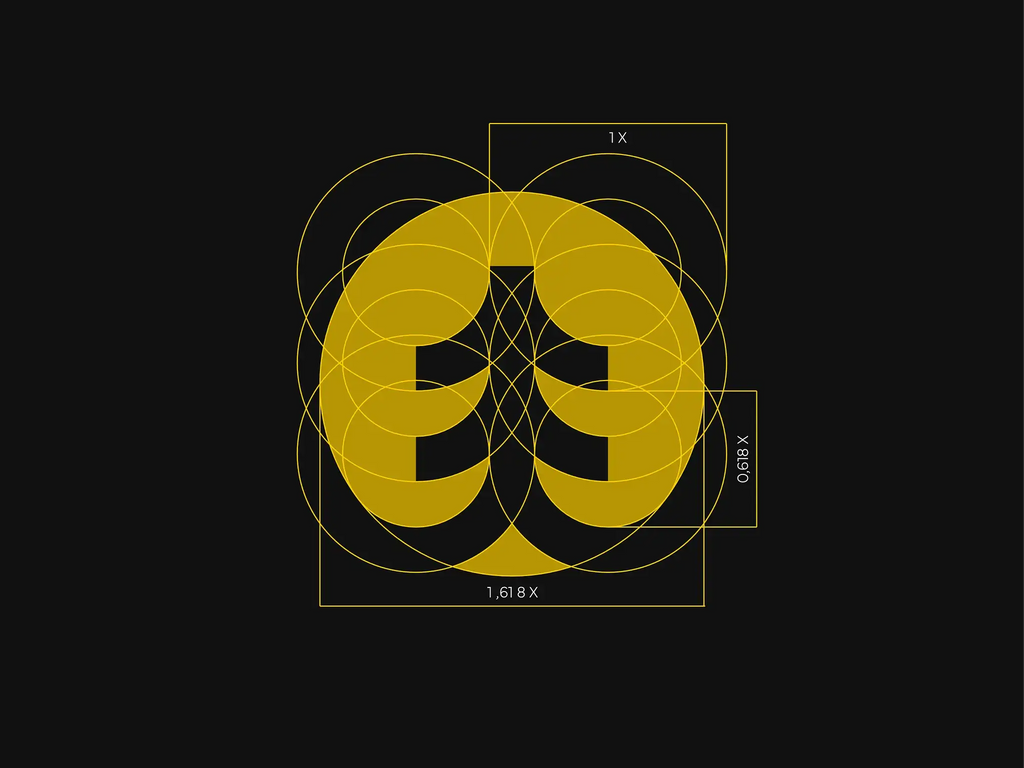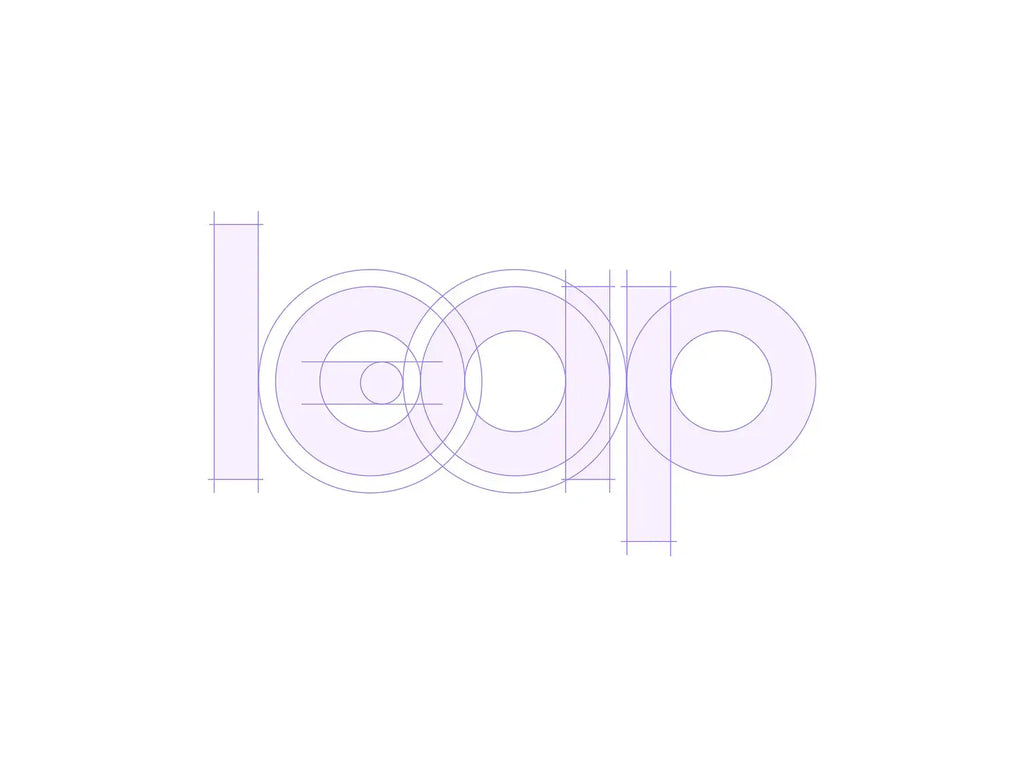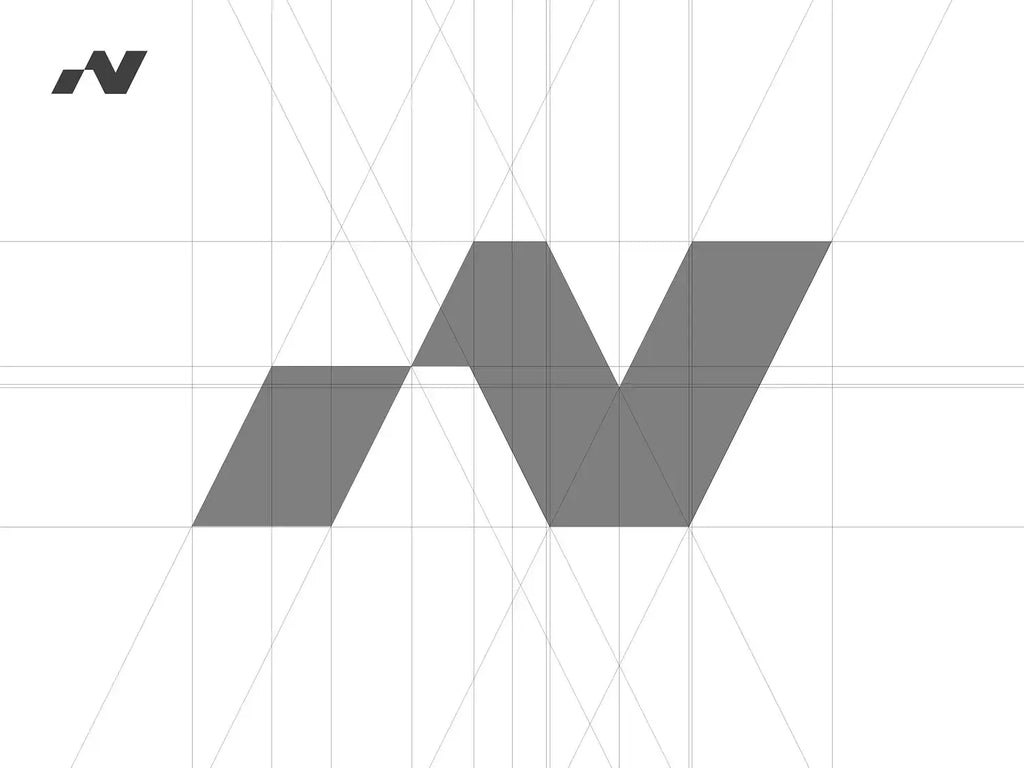Key Benefits of Using Grid Systems in Logo Design

Source: Daniel Rotter, MTB Collective - Logo Grid, Dribbble, https://dribbble.com/shots/14949851-MTB-collective-Logo-grid
Grid systems serve as a foundational tool that enables designers to create logos that are not only visually appealing but also structurally sound. These systems provide a skeleton framework that guides the placement of elements within a design, ensuring alignment and proportional accuracy. Whether you are crafting a simple icon or an intricate emblem, grid systems facilitate a methodical approach to design. This ensures that every part of the logo is harmoniously balanced and aligned, contributing to a cohesive brand image that is both recognizable and memorable.
Moreover, the use of grid systems in logo design simplifies the creative process, allowing designers to efficiently translate their vision into a tangible form. By adhering to a grid, designers can make calculated decisions that enhance the logo’s aesthetic and functional qualities, making grid systems indispensable in the pursuit of excellent logo design. This article explores the multifaceted benefits of utilizing grid systems, demonstrating their crucial role in creating effective and enduring logos.
Enhances Alignment and Balance
The use of grid systems in logo design plays a pivotal role in enhancing alignment and balance, fundamental aspects that influence the overall effectiveness and aesthetic appeal of a logo. Grids serve as a visual guideline, enabling designers to place elements within a logo precisely and symmetrically. This systematic approach ensures that each component of the logo is aligned both vertically and horizontally, creating a balanced distribution of visual weight across the design. Such alignment is crucial not only for aesthetic symmetry but also for reinforcing the stability and harmony of the logo. A well-balanced logo is more pleasing to the eye and conveys a sense of professionalism and reliability.
By using grid systems, designers can achieve a consistent layout that enhances the logo's visual impact and ensures it remains effective and appealing in various applications and sizes. This structured methodology not only simplifies the design process but also instills a sense of confidence in the brand identity, as each element is meticulously positioned to contribute to a cohesive visual narrative.
Facilitates Scalability
Scalability is an essential factor in logo design, ensuring that a logo maintains its integrity and impact across all sizes and formats. Grid systems are instrumental in achieving this scalability. By defining a structured framework, grids allow for the proportional resizing of logos, ensuring that every element retains its relative position and dimension regardless of scale. This is particularly important in today's digital age, where a logo must perform well on various platforms, from monumental billboards to minute mobile icons.
A grid-based design ensures that a logo remains legible and visually coherent, whether it is enlarged for a poster or reduced for a favicon. This adaptability is crucial for maintaining brand consistency across multiple media channels. Moreover, grids help prevent common scaling issues such as distortion or loss of detail, which can undermine the logo’s effectiveness. By facilitating scalability, grid systems not only enhance the versatility of a logo but also extend its usability, making it a reliable and enduring symbol of the brand it represents.
Improves Readability and Recognition
Grid systems significantly enhance the readability and recognition of logos, crucial factors that affect how quickly and effectively a brand is identified by its audience. By providing a structured framework for placing design elements, grids ensure that logos are not only aesthetically pleasing but also clear and easy to interpret. This clarity is achieved by maintaining consistent spacing, alignment, and proportional relationships among the elements, which helps to create a clean and organized appearance.
Such organization is vital for making the logo recognizable at a glance, which is especially important in today's fast-paced world where visual impressions are made quickly. Grids also aid in emphasizing the most important parts of a logo, such as the brand's initials or symbolic elements, making them more prominent and memorable. This systematic approach to design not only improves the immediate legibility of the logo but also enhances its long-term recognition, ensuring that the logo makes a lasting impact and strengthens the brand identity.

Source: Aditya Chhatrala, Leap Logo Grid, Dribbble, https://dribbble.com/shots/17164064-Leap-logo-grid
Speeds Up the Design Process
Utilizing grid systems in logo design can significantly speed up the design process by providing a clear roadmap for the placement and scaling of elements. Grids establish a set of rules that streamline decision-making and reduce the amount of time spent on trial and error. Designers can quickly assess where to place elements for optimal visual balance and cohesion, allowing for a more efficient design workflow. This efficiency is particularly beneficial when working under tight deadlines or when multiple iterations are needed. Furthermore, grids promote consistency, making it easier to apply changes or adaptations without starting from scratch.
This can be a tremendous advantage when developing multiple versions of a logo for different uses or media outlets. By reducing the complexity of design decisions and minimizing revisions, grid systems enable designers to deliver high-quality logos faster, giving them a competitive edge in the marketplace. This approach not only saves time but also ensures a higher standard of design work, benefiting both the designer and the client.
Ensures Consistency Across Different Media
Grid systems play an essential role in ensuring consistency across different media, a crucial aspect of brand identity and recognition. When a logo is used on various platforms, from digital displays to print media, it must maintain visual consistency to reinforce the brand's image and message. Grids provide a standardized framework within which all the elements of a logo are aligned and proportioned, ensuring that the logo retains its intended appearance regardless of the medium. This consistent representation helps build a strong, cohesive brand identity as the logo becomes easily recognizable and reliable in the eyes of the audience.
Moreover, using a grid system allows designers to adapt the logo for different formats while preserving key design elements. Whether adjusting for size, resolution, or context, the structural support of a grid ensures that the logo's core features are undistorted and that its visual impact is sustained. This adaptability across media not only enhances brand integrity but also increases the logo's effectiveness in engaging various target audiences.
Aids in Creating Dynamic Compositions
Utilizing grid systems in logo design aids in creating dynamic compositions that capture attention while maintaining a clean and organized aesthetic. Grids serve as a versatile tool that allows designers to experiment with different layout configurations, helping to inject energy and movement into the logo. By defining spatial relationships and alignment guidelines, grids enable the strategic placement of elements to achieve visual harmony and rhythm. This structured creativity encourages designers to explore various compositional possibilities, such as asymmetry or dynamic tension, without compromising the logo’s balance and readability.
The ability to manipulate and control the arrangement of design elements within a grid fosters innovation and originality, resulting in logos that are both captivating and effective. Through the use of grids, designers can craft logos that not only stand out but also resonate with the brand's unique identity, making them more memorable and impactful. This approach ensures that the logo not only looks good but also communicates the brand’s message in a visually compelling way.
Helps in Achieving Proportional Accuracy
One of the key benefits of using grid systems in logo design is their ability to help achieve proportional accuracy. Grids act as a guiding framework that designers can use to measure and position each element of the logo precisely. This meticulous structuring ensures that all components of the logo are proportionally balanced in relation to each other, creating a harmonious and aesthetically pleasing composition. Proportional accuracy is vital not only for the visual appeal of the logo but also for its functional adaptability across various sizes and applications.
When elements are proportionately aligned, the logo can be scaled up or down without losing its effectiveness or visual integrity. This precision aids in maintaining a consistent identity in all brand representations, from tiny app icons to large-scale billboards, ensuring that the logo always looks its best. Utilizing grid systems for proportional accuracy not only enhances the professional quality of the design but also instills a sense of trust and reliability in the brand.

Source: Matthias Vancoillie, NV - Grid, Dribbble, https://dribbble.com/shots/10979730-NV-Grid
Enhances Creativity Within Constraints
Grid systems are often thought of as restrictive, but in the context of logo design, they can significantly enhance creativity within constraints. By providing a structured canvas, grids challenge designers to think more deliberately about space, composition, and how elements interact within defined limits. This can lead to innovative design solutions that might not have been considered in a more free-form environment. Grids encourage a focus on essential elements, fostering clear, effective communication through the logo. This discipline does not stifle creativity; rather, it pushes designers to explore every creative avenue within the bounds of the grid, leading to unique and memorable logos.
Moreover, the limitations imposed by grids can inspire designers to play with negative space, align disparate elements into a cohesive whole, and experiment with visual balance, all of which can result in a more engaging and distinctive logo. This creative exploration within the safety of a grid system allows designers to create logos that are not only functional and recognizable but also creatively enriched.
Supports Typography Alignment
Grid systems are invaluable in logo design, particularly when it comes to typography alignment. They provide a structured framework that ensures text elements are precisely aligned and proportioned relative to other visual elements within the logo. This alignment is crucial for creating a cohesive and visually appealing design that communicates the brand's message effectively. By using a grid, designers can determine the optimal spacing, scale, and placement of typography to enhance readability and impact.
This systematic approach prevents common typographic issues such as awkward spacing or misalignments that can detract from the logo's overall look and effectiveness. Additionally, a well-aligned typography supports the logo's legibility across different mediums and sizes, ensuring that the brand name is always clear and prominent, regardless of where it appears. Grid systems thus not only improve the aesthetic quality of the logo but also reinforce the professional standard of the brand's visual identity.
Promotes a Professional Appearance
Using grid systems in logo design significantly promotes a professional appearance, essential for establishing trust and credibility with the target audience. Grids help create logos that are not only visually attractive but also clean and organized, traits that reflect well on the brand's professional image. This structured approach to design ensures that every element is meticulously placed and balanced, which conveys a sense of attention to detail and dedication. A professional-looking logo, characterized by precision and consistency, instills confidence in consumers and partners alike, suggesting that the company values quality and professionalism in its products or services.
Moreover, the strategic use of grids can elevate the brand above competitors, providing a competitive edge in markets where first impressions are crucial. By adhering to grid systems, designers can achieve a refined and authoritative appearance, making the logo a powerful tool in business communications and brand strategy.
Conclusion
The strategic use of grid systems in logo design brings a multitude of benefits that enhance both the aesthetic appeal and functional efficacy of logos. These systems not only ensure alignment, balance, and consistency but also support scalability and typographical precision. By facilitating creativity within constraints, grids empower designers to craft logos that are not only visually striking but also universally adaptable and instantly recognizable. Ultimately, employing grid systems elevates the professional stature of the brand, affirming its identity across diverse platforms and interactions. Thus, embracing grid systems in logo design is indispensable for achieving a robust and resonant brand presence.
Let Us Know What You Think!
Every information you read here are written and curated by Kreafolk's team, carefully pieced together with our creative community in mind. Did you enjoy our contents? Leave a comment below and share your thoughts. Cheers to more creative articles and inspirations!















Leave a Comment